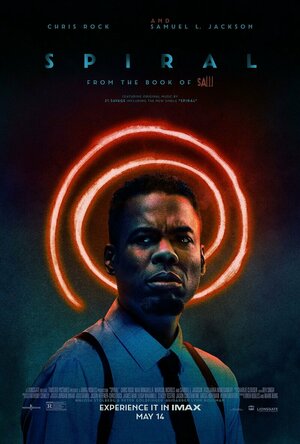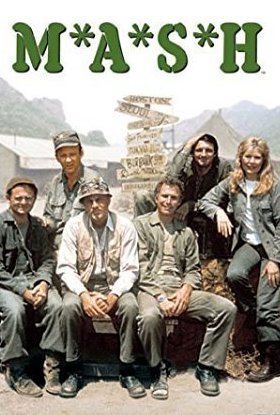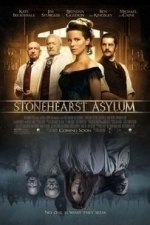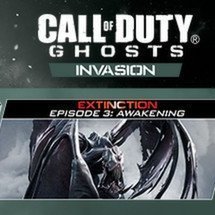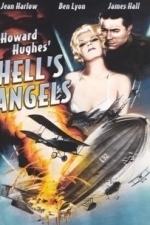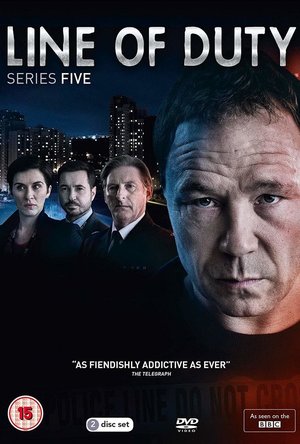Search
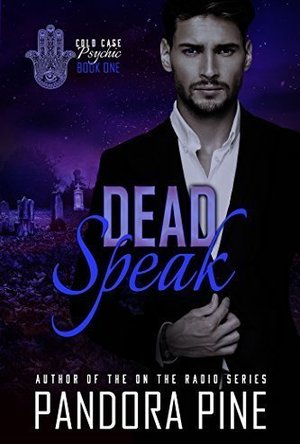
Dead Speak (Cold Case Psychic Book 1)
Book
Demoted to the cold case squad after shooting a suspect in the line of duty, Detective Ronan...
Gareth von Kallenbach (980 KP) rated Call of Duty: Black Ops II - Uprising in Video Games
Jun 19, 2019
With the recent announcement of Call of Duty: Ghosts speculation has run rampant as to what the series has in store especially with the promise of the new gaming engine and new consoles on the horizon. However Call of Duty: Black Ops II shows that there’s still plenty of life left in the game with the release of Uprising, the second of four planned map packs for the game. Uprising is available for the Xbox 360, PlayStation 3, and PC versions of the game and does require the original game in order to play. Players can purchase the map pack individually or as part of a season pass that allows all past and future content for the game to be acquired at a discounted price.
The pack offers for new maps as well as a new zombie mode called Mob of the Dead, which casts players as inmates at Alcatraz which is being overrun by the undead. Gameplay wise it is similar to pass on the modes in net weapons, power ups, ammunition, and access to other areas of the maps can be obtained through purchase using the in game currency accrued from dispatching the undead.
There is also a nice surprise to this that in addition to trying to locate and assemble parts to make your escape, the voice talents of Michael Madsen, Joe Pantoliano, Chazz Palminteri, and Ray Liotta, provide a very nice depth to the game as they helped bring an infusion of personality to the characters which really makes you care about their outcome.
There is an afterlife mode as well which is necessary for accessing certain areas and gathering components needed for survival. It is also very satisfying to shock some of the undead minions while in this gameplay mode. Players were one and make sure to avoid the new boss Brutus who gives out a solid amount of damage every time he appears.
The four maps are available for play in various modes such as Team Death Match and Mosh Pit but do not offer the number of online modes that are available for the standard version of the game.
Vertigo is set in a futuristic high-rise in India and requires gamers to be very careful about where they step if they wish to avoid plummeting several stories to their doom. With a circular outside platform and limited indoor areas the emphasis is on using cover as much as possible especially from the abundant cargo and air-conditioning units that litter the map. I found this to be the least satisfying for my style of play as not being able to run, and constantly being at the mercy of snipers did make it very frustrating for me.
Encore is set in London at a music festival and offers a nice mix of options for players of all gaming styles. From the backstage area which is ideal for setting mines and other traps, to the grandstand boxes which offer numerous opportunities for snipers to ply their craft. Since neither these are my style of play, I was content to work my way under the stage, and through the clubs, restrooms, and park areas as well as on stage to catch enemy units transitioning from one point of the map to the other. The key is not stay in one place too long as I start to the run and gun mode and had solid success.
Magma is set in Japan following a volcanic eruption. Having to avoid lava and make your way over cooling areas through the village is definitely a nice visual touch. Everything from fish markets to subway stations and trains are on hand, but players have to be quick on the trigger as there are numerous areas for enemies to hide and blend into the shadows. Once I learned some of the nuances of the map, I did find myself having better luck and have racked up scores closer to my average on this one.
Studio is a reworking of the classic Firing Line map and is set at a Hollywood film studio. From the long areas of the lot which are ideal for snipers as well as the ample rooftop spaces, players must be on their toes because death can come from anywhere at any time. From a T Rex to a crashed alien ship this map has plenty of variety. One moment you are moving through a medieval castle, the next moment you are walking through a saloon and then stomping a miniaturized city like Godzilla. There are also plenty of other great locales and it would be fun just to run through and sightsee if there was not so much mayhem going on around you.
I find it best to avoid snipers zones and make your way through the areas that offer plenty of cover and make great use of the trailers as they certainly provide cover and great areas of transition as well as ambush.
While uprising does not offer anything new in terms of weaponry, equipment, or rewards, what it does offer is several hours of new gameplay enjoyment for friends of the series who are in need of effects while they wait for the next release in the series. With two more map scheduled between now and November, you’ll want to check this out and as long as you are moderate in your expectations understanding these are simply new maps to enhance your gameplay, then you might find yourself really enjoying what is being offered with this diverse yet enjoyable collection.
http://sknr.net/2013/05/19/call-of-duty-black-ops-2-uprising/
The pack offers for new maps as well as a new zombie mode called Mob of the Dead, which casts players as inmates at Alcatraz which is being overrun by the undead. Gameplay wise it is similar to pass on the modes in net weapons, power ups, ammunition, and access to other areas of the maps can be obtained through purchase using the in game currency accrued from dispatching the undead.
There is also a nice surprise to this that in addition to trying to locate and assemble parts to make your escape, the voice talents of Michael Madsen, Joe Pantoliano, Chazz Palminteri, and Ray Liotta, provide a very nice depth to the game as they helped bring an infusion of personality to the characters which really makes you care about their outcome.
There is an afterlife mode as well which is necessary for accessing certain areas and gathering components needed for survival. It is also very satisfying to shock some of the undead minions while in this gameplay mode. Players were one and make sure to avoid the new boss Brutus who gives out a solid amount of damage every time he appears.
The four maps are available for play in various modes such as Team Death Match and Mosh Pit but do not offer the number of online modes that are available for the standard version of the game.
Vertigo is set in a futuristic high-rise in India and requires gamers to be very careful about where they step if they wish to avoid plummeting several stories to their doom. With a circular outside platform and limited indoor areas the emphasis is on using cover as much as possible especially from the abundant cargo and air-conditioning units that litter the map. I found this to be the least satisfying for my style of play as not being able to run, and constantly being at the mercy of snipers did make it very frustrating for me.
Encore is set in London at a music festival and offers a nice mix of options for players of all gaming styles. From the backstage area which is ideal for setting mines and other traps, to the grandstand boxes which offer numerous opportunities for snipers to ply their craft. Since neither these are my style of play, I was content to work my way under the stage, and through the clubs, restrooms, and park areas as well as on stage to catch enemy units transitioning from one point of the map to the other. The key is not stay in one place too long as I start to the run and gun mode and had solid success.
Magma is set in Japan following a volcanic eruption. Having to avoid lava and make your way over cooling areas through the village is definitely a nice visual touch. Everything from fish markets to subway stations and trains are on hand, but players have to be quick on the trigger as there are numerous areas for enemies to hide and blend into the shadows. Once I learned some of the nuances of the map, I did find myself having better luck and have racked up scores closer to my average on this one.
Studio is a reworking of the classic Firing Line map and is set at a Hollywood film studio. From the long areas of the lot which are ideal for snipers as well as the ample rooftop spaces, players must be on their toes because death can come from anywhere at any time. From a T Rex to a crashed alien ship this map has plenty of variety. One moment you are moving through a medieval castle, the next moment you are walking through a saloon and then stomping a miniaturized city like Godzilla. There are also plenty of other great locales and it would be fun just to run through and sightsee if there was not so much mayhem going on around you.
I find it best to avoid snipers zones and make your way through the areas that offer plenty of cover and make great use of the trailers as they certainly provide cover and great areas of transition as well as ambush.
While uprising does not offer anything new in terms of weaponry, equipment, or rewards, what it does offer is several hours of new gameplay enjoyment for friends of the series who are in need of effects while they wait for the next release in the series. With two more map scheduled between now and November, you’ll want to check this out and as long as you are moderate in your expectations understanding these are simply new maps to enhance your gameplay, then you might find yourself really enjoying what is being offered with this diverse yet enjoyable collection.
http://sknr.net/2013/05/19/call-of-duty-black-ops-2-uprising/
Kristin (149 KP) rated Cruxim (Fallen Angel/Vampire #1) in Books
Dec 7, 2018
Disclaimer: I received an e-copy from the author in exchange for an honest review.
I love to read pretty much anything mythological and/or supernatural, and this book had both. Amedeo, the Cruxim from the title, looks like an angel, but looks can be deceiving. His mission is to kill as many vampires as possible, as that's what Cruxims are made to do. Along the way, he meets a little human girl named Joslyn, who ultimately falls in love with him, but he knows it can't be. Then she's attacked and turned by a vampire, and now Amedeo must decide whether he can perform his duty and kill her or not. Another woman in his life, Sabine, is a Sphinx, part-woman and part-lion, and she helps him move on with his life after Joslyn's transformation.
Just the idea of Cruxims, Sphinxes, and Vampires was interesting enough, but then a traveling circus/freak show gets introduced, and it gets really interesting (not that it wasn't great before). This book has so many wonderful aspects to it, and it definitely held my attention throughout the entire story. I look forward to more works along this line, and more from the author, in general.
5 stars
I love to read pretty much anything mythological and/or supernatural, and this book had both. Amedeo, the Cruxim from the title, looks like an angel, but looks can be deceiving. His mission is to kill as many vampires as possible, as that's what Cruxims are made to do. Along the way, he meets a little human girl named Joslyn, who ultimately falls in love with him, but he knows it can't be. Then she's attacked and turned by a vampire, and now Amedeo must decide whether he can perform his duty and kill her or not. Another woman in his life, Sabine, is a Sphinx, part-woman and part-lion, and she helps him move on with his life after Joslyn's transformation.
Just the idea of Cruxims, Sphinxes, and Vampires was interesting enough, but then a traveling circus/freak show gets introduced, and it gets really interesting (not that it wasn't great before). This book has so many wonderful aspects to it, and it definitely held my attention throughout the entire story. I look forward to more works along this line, and more from the author, in general.
5 stars
Gareth von Kallenbach (980 KP) rated Spiral: From the Book of Saw (2021) in Movies
May 12, 2021
Detective Zeke Banks (Chris Rock); is a man under stress. His decision to report a corrupt cop has made him enemies within his precinct and set him at odds with his father Marcus (Samuel L. Jackson); who also happens to be the former Chief of Police.
This tension has caused Zeke to be shot in the line of duty when fellow officers refused to respond to his calls for backup which even further inflamed a tense situation and made Zeke a Lone Wolf who is hesitant to work with others and has cost him his marriage.
Unfortunately for Zeke; a grisly murder happens and he is assigned a new partner named William Schenk (Max Minghella); to investigate what appears to be a copycat of the long-dead Jigsaw.
The fact that the victim is a fellow cop inflames the office and when Zeke is sent a package from the killer which promises more killings to follow as the corruption within his department needs to be stopped.
As the victims begin to mount; Zeke and William find themselves in a race against time to discover the identity of the killer and stop the killings.
“Spiral: From The Book Of SAW”; is an interesting new entry into the franchise and in keeping with “Jigsaw:’ was more engaging than several of the last films in the main franchise as it gives audiences deeper characters and scenarios than normally shown in the series.
While the traps are as clever and gruesome as fans of the series would expect; the decision to target cops is an interesting choice and in many ways reflects the growing cries for reforming the Police but does it in an extreme way and balances out that there are good cops in the mix who serve and protect.
Chris Rock also served as a Producer was good in the role and it was refreshing to see him play a darker and more dramatic character. While he still has moments of clever riffs; they are appropriately placed within the film and do not take away from the fact that Zeke is a troubled and driven individual.
The supporting cast is solid and while I was able to identify the individual behind the killings fairly early; there were enough Red Herrings along the way that may keep audiences guessing.
Director Darren Lynn Bousman who directed the second to the fourth film in the series has made a solid return to the franchise and keeps the dark and dirty look of the film’s trap sequences and while they are gory; there is a cleverness to them that should delight fans of the series.
In the end “Spiral” has enough of what fans of the franchise expect and infuses some interesting new characters and scenarios to make one of the more complete and enjoyable entries in the series.
This tension has caused Zeke to be shot in the line of duty when fellow officers refused to respond to his calls for backup which even further inflamed a tense situation and made Zeke a Lone Wolf who is hesitant to work with others and has cost him his marriage.
Unfortunately for Zeke; a grisly murder happens and he is assigned a new partner named William Schenk (Max Minghella); to investigate what appears to be a copycat of the long-dead Jigsaw.
The fact that the victim is a fellow cop inflames the office and when Zeke is sent a package from the killer which promises more killings to follow as the corruption within his department needs to be stopped.
As the victims begin to mount; Zeke and William find themselves in a race against time to discover the identity of the killer and stop the killings.
“Spiral: From The Book Of SAW”; is an interesting new entry into the franchise and in keeping with “Jigsaw:’ was more engaging than several of the last films in the main franchise as it gives audiences deeper characters and scenarios than normally shown in the series.
While the traps are as clever and gruesome as fans of the series would expect; the decision to target cops is an interesting choice and in many ways reflects the growing cries for reforming the Police but does it in an extreme way and balances out that there are good cops in the mix who serve and protect.
Chris Rock also served as a Producer was good in the role and it was refreshing to see him play a darker and more dramatic character. While he still has moments of clever riffs; they are appropriately placed within the film and do not take away from the fact that Zeke is a troubled and driven individual.
The supporting cast is solid and while I was able to identify the individual behind the killings fairly early; there were enough Red Herrings along the way that may keep audiences guessing.
Director Darren Lynn Bousman who directed the second to the fourth film in the series has made a solid return to the franchise and keeps the dark and dirty look of the film’s trap sequences and while they are gory; there is a cleverness to them that should delight fans of the series.
In the end “Spiral” has enough of what fans of the franchise expect and infuses some interesting new characters and scenarios to make one of the more complete and enjoyable entries in the series.
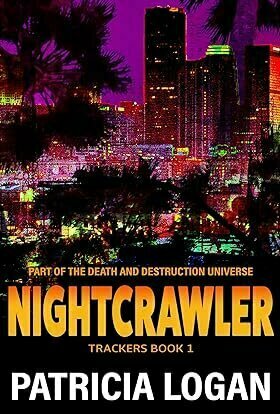
Nightcrawler (Trackers #1)
Book
I’ve always been a sucker for a guy with muscles and a handsome face. If that makes me sound...
Contemporary MM Mystery Suspense Series
Gareth von Kallenbach (980 KP) rated Stonehearst Asylum (2015) in Movies
Jun 19, 2019
In the late 19th century in England, medicine was by today’s standards primitive and at times barbaric. The nature of psychiatric care of the times was even more frightening as maladies that today are treated with medication often resulted in a lifetime of confinement in an Asylum where all manner of treatments which today would be considered torture were used.
In the new thriller “Stonehearst Asylum” a young doctor named Edward Newgate (Jim Sturgess), travels to a remote asylum on Christmas Eve to being a practical study following his time at Oxford.
He is greeted upon his arrival by Silas Lamb (Ben Kingsley, who is eager to size up the new assistant upon his arrival.
Newgate is fascinated by the patients especially one named Eliza (Kate Beckinsale), who shows a grace and range of talents not normally associated with those who have been committed. It is explained that all of those assigned to Stonehearts are from the upper class of society and as such, their maladies have made them outcasts from polite society.
Edward begins to have concerns when he is told by Eliza that he must leave immediately and not return and despite her warnings, he remains and soon makes a startling discovery.
It is learned that a patient named Salt (Michael Caine) is actually the man in charge of the facility and that Lamb is a dangerous psychopath who has imprisoned or killed the asylum staff and has replaced them with his fellow inmates.
Trapped in a world gone mad, Edward must strive to do his duty as a physician to care for those in need, while trying to walk the line between the madness of Lamb and his fellow inmates.
The film is a well-cast and exciting thriller that keeps you entertained without resorting to the standard scares and tricks of other suspense films.
The characters have a complexity and compassion to them as you will find yourself engrossed by the various characters and their situations.
Director Brad Anderson is no stranger to suspense and he has crafted a captivating take that is rich with the visuals of the era yet remaining a character based drama it its core.
The film is based on a short story by Edgar Allen Poe and Mel Gibson is one of the Producers attached to the film which helps underscore how they were able to assemble such a strong cast to the film despite the lack of a major studio to finance or distribute the film.
The film does have some moments that at times make you wonder why some characters did not take more obvious courses of action but yet the film works in spite of this.
In the end the haunting setting and subject matter mesh well with the characters to create a thrilling and entertaining drama that is one of the more enjoyable surprises of the year.
http://sknr.net/2014/10/24/stonehearst-asylum/
In the new thriller “Stonehearst Asylum” a young doctor named Edward Newgate (Jim Sturgess), travels to a remote asylum on Christmas Eve to being a practical study following his time at Oxford.
He is greeted upon his arrival by Silas Lamb (Ben Kingsley, who is eager to size up the new assistant upon his arrival.
Newgate is fascinated by the patients especially one named Eliza (Kate Beckinsale), who shows a grace and range of talents not normally associated with those who have been committed. It is explained that all of those assigned to Stonehearts are from the upper class of society and as such, their maladies have made them outcasts from polite society.
Edward begins to have concerns when he is told by Eliza that he must leave immediately and not return and despite her warnings, he remains and soon makes a startling discovery.
It is learned that a patient named Salt (Michael Caine) is actually the man in charge of the facility and that Lamb is a dangerous psychopath who has imprisoned or killed the asylum staff and has replaced them with his fellow inmates.
Trapped in a world gone mad, Edward must strive to do his duty as a physician to care for those in need, while trying to walk the line between the madness of Lamb and his fellow inmates.
The film is a well-cast and exciting thriller that keeps you entertained without resorting to the standard scares and tricks of other suspense films.
The characters have a complexity and compassion to them as you will find yourself engrossed by the various characters and their situations.
Director Brad Anderson is no stranger to suspense and he has crafted a captivating take that is rich with the visuals of the era yet remaining a character based drama it its core.
The film is based on a short story by Edgar Allen Poe and Mel Gibson is one of the Producers attached to the film which helps underscore how they were able to assemble such a strong cast to the film despite the lack of a major studio to finance or distribute the film.
The film does have some moments that at times make you wonder why some characters did not take more obvious courses of action but yet the film works in spite of this.
In the end the haunting setting and subject matter mesh well with the characters to create a thrilling and entertaining drama that is one of the more enjoyable surprises of the year.
http://sknr.net/2014/10/24/stonehearst-asylum/
Gareth von Kallenbach (980 KP) rated Call of Duty: Ghosts - Invasion in Video Games
Jun 19, 2019
Just in time for the 4th of July, Activision has released the Invasion DLC for Call of Duty: Ghosts so PC and Playstation users can get in on the action. The content as per the usual formula releases first on Xbox systems and then makes it way to the other platforms where it can be purchased on its own or as part of a season pass which offers 4 DLC releases.
The new release offers four new maps and the latest chapter of Extinction which will provide plenty of variety to keep fans going until the final DLC set is released which sets the stage for Call of Duty: Advanced Warfare in the fall.
Mixing old and new the new maps have much to offer at first glance and look to take the online experience of the game to the next level.
Pharaoh
Is set amongst Egyptian runes and there are dark temples and rubble strewn courtyards for players to navigate. Sadly it also makes for an ideal place for campers to setup in the shadow and this is one of the biggest frustrations as spawn camping happened to me often.
When I could get out to explore the richly detailed maps were great fun and I enjoyed the traps such as the collapsible pillar, the secret room, and the flesh eating scarabs as well as other treats the developers provided. I just wish gameplay issues did not mar the joy as much as they did.
Departed
Is set in a small Mexican Town during the Day of the Dead festival as if you had any doubt, the hearse and lively décor in the town’s fountain would be a giveaway. There is a church, retail shops, courtyards, and vehicles to contend with, however once again, camping rules the day as players often hide in the shadows or above picking players off when they spawn and making progress around the map tricky.
The Death Mariachi can be obtained via Field Orders and having a spectral ally with dual .44 Magnums can be a huge help along the way to victory for those lucky enough to obtain it.
Mutiny
This is perhaps the most creative of the new content as players battle in and around pirate ships and must contend with some speed and stealth requirements and two great Field Orders. There is the cannon barrage from the nearby sailing ship and the Ghostly Crew who are more than happy to help send enemies down the briny depths each chance they get.
I found a shotgun or an AK 47 worked best here as the close quarters make ideal conditions for a shotgun but on deck and the pier the rapid fire functions of the AK really helped out.
Favela
This is an update of the popular map from Modern Warfare II set in the Rio slums. Players have to run and gun across varied terrain to battle the enemy which is no easy task as snipers and campers love this map so expect to be frustrated if you have not played it before. Every window is a possible hiding place so this is not ideal for run and gun players.
Awakening
This is the third chapter in the Extinction storyline where players team up to battle an alien threat. This time they take the fight and the drill to the Alien’s backyard. As before players earn money by dispatching aliens which can be used for better weapons and power ups.
You need to work with one another as death will happen and you will need your team to revive you as once all four players are down, the game is over, and you will have to start the campaign over.
Calling in some sentry guns and artillery strikes help with the never ending waves as this is the best of the DLC by far.
As much as I wanted to love this collection, sadly I ran into several issues with this collection which has marred my enjoyment of it. Issues with camping, lag, and rampant hacking have been so bad that I have struggled at times to find games on the PC version and when I have, gameplay at times has been almost unplayable.
Skill is one thing but when you unload half a clip in a target and they stand there taking it or kill you dead with one shot all the while being hit, you know you have a hack, lag, or gameplay issues. This happened time and time again, day in and day out.
Many players had told me in game how unhappy they have been with this collection as the maps encourage camping which leads to a lot of frustration.
Some users have complained that the matchmaking system is combing players regardless of their geography which is resulting in latency issues. I cannot tell you how many times a game has slowed to a crawl or stopped or how gunfire appeared to have no affect due to lag which on a 20 MBS line should not happen.
I did not see issues as bad as this with the previous two DLCs, the first one actually helped change my thoughts on the multiplay of Ghost which for me has been the least enjoyable of the series. That being said, it sadly is a return to form this time around and I am hoping that we have a better finale in store.
http://sknr.net/2014/07/14/call-of-duty-ghosts-invasion-dlc/
The new release offers four new maps and the latest chapter of Extinction which will provide plenty of variety to keep fans going until the final DLC set is released which sets the stage for Call of Duty: Advanced Warfare in the fall.
Mixing old and new the new maps have much to offer at first glance and look to take the online experience of the game to the next level.
Pharaoh
Is set amongst Egyptian runes and there are dark temples and rubble strewn courtyards for players to navigate. Sadly it also makes for an ideal place for campers to setup in the shadow and this is one of the biggest frustrations as spawn camping happened to me often.
When I could get out to explore the richly detailed maps were great fun and I enjoyed the traps such as the collapsible pillar, the secret room, and the flesh eating scarabs as well as other treats the developers provided. I just wish gameplay issues did not mar the joy as much as they did.
Departed
Is set in a small Mexican Town during the Day of the Dead festival as if you had any doubt, the hearse and lively décor in the town’s fountain would be a giveaway. There is a church, retail shops, courtyards, and vehicles to contend with, however once again, camping rules the day as players often hide in the shadows or above picking players off when they spawn and making progress around the map tricky.
The Death Mariachi can be obtained via Field Orders and having a spectral ally with dual .44 Magnums can be a huge help along the way to victory for those lucky enough to obtain it.
Mutiny
This is perhaps the most creative of the new content as players battle in and around pirate ships and must contend with some speed and stealth requirements and two great Field Orders. There is the cannon barrage from the nearby sailing ship and the Ghostly Crew who are more than happy to help send enemies down the briny depths each chance they get.
I found a shotgun or an AK 47 worked best here as the close quarters make ideal conditions for a shotgun but on deck and the pier the rapid fire functions of the AK really helped out.
Favela
This is an update of the popular map from Modern Warfare II set in the Rio slums. Players have to run and gun across varied terrain to battle the enemy which is no easy task as snipers and campers love this map so expect to be frustrated if you have not played it before. Every window is a possible hiding place so this is not ideal for run and gun players.
Awakening
This is the third chapter in the Extinction storyline where players team up to battle an alien threat. This time they take the fight and the drill to the Alien’s backyard. As before players earn money by dispatching aliens which can be used for better weapons and power ups.
You need to work with one another as death will happen and you will need your team to revive you as once all four players are down, the game is over, and you will have to start the campaign over.
Calling in some sentry guns and artillery strikes help with the never ending waves as this is the best of the DLC by far.
As much as I wanted to love this collection, sadly I ran into several issues with this collection which has marred my enjoyment of it. Issues with camping, lag, and rampant hacking have been so bad that I have struggled at times to find games on the PC version and when I have, gameplay at times has been almost unplayable.
Skill is one thing but when you unload half a clip in a target and they stand there taking it or kill you dead with one shot all the while being hit, you know you have a hack, lag, or gameplay issues. This happened time and time again, day in and day out.
Many players had told me in game how unhappy they have been with this collection as the maps encourage camping which leads to a lot of frustration.
Some users have complained that the matchmaking system is combing players regardless of their geography which is resulting in latency issues. I cannot tell you how many times a game has slowed to a crawl or stopped or how gunfire appeared to have no affect due to lag which on a 20 MBS line should not happen.
I did not see issues as bad as this with the previous two DLCs, the first one actually helped change my thoughts on the multiplay of Ghost which for me has been the least enjoyable of the series. That being said, it sadly is a return to form this time around and I am hoping that we have a better finale in store.
http://sknr.net/2014/07/14/call-of-duty-ghosts-invasion-dlc/
RəX Regent (349 KP) rated Hell's Angels (1930) in Movies
Feb 19, 2019
Big budget, elaborate air combat scenes which resulted in several deaths and Gimmick after gimmick… This has to be the Howard Hughes’ World War 1 epic, Hell’s Angels.
Where to begin?
Well, we follow the Routledge two brothers as they join the war effort and the Royal Air Corps. in 1914 and whilst one is a somewhat cowardly womaniser, his brother is the noble heroic type who spends the film being screwed over bey everyone in one way or another, but most notably by his girlfriend, Jean Harlow, who is so annoyingly wrong for him that it is a relief when he has heart is broken by her in the third act.
But like mots aspects of this plot, this is as messy and disjointed as everything else. We are given a story line to follow for two hours, as Hughes indulges his legendary love of flying to create some of the best dog fight sequences ever committed to film. They are real, epic and effective in conveying the thrilling danger of these world war one battles.
But this is a film of gimmick. Pushing the pre-code envelope with sex and bad language, this was originally conceived as a silent movie and was re-written and re-shot to become the sound movie whcih we have to today and there in clearly lies the problem. What we end up is a movie cobbled together, with silence sequences being converted to sound, the poor acting from its star James Hall as the idealistic Roy Routledge, Jean Harlow, replacing the original silent star Gretta Nissen for this sound version, excelling in her role as his trampy girlfriend and Ben Lyon as the weaker brother, Monte, but the real star of this show are the special effects.
But of the human stars, Harlow, presented here in the only colour footage known to exist of the tragic star, who would die at the young age of 26 just seven years later, probably delivers one of the best performances in the whole picture, certainly outshining her male co-stars.
Of the special effects though, the use of 2-tone Technicolor, which was actually shot with the Metrocolor system but processed by Technicolor, in one sequence as the group are all together at a party, as well as the classical use of tints during some other scenes, add a vibrancy to the project. But this also can have a jarring effect, especially as we leave the colour scenes and wrap up thet sequences in black and white.
But the model effects, notably the munition raid at the end and the Zeppelin bombing London scenes are spectacular, especially for the time. The other notable gimmick which has yet to be transferred to the small screen, was the original use of what was called Magnascope back in 1930.
This was obviously only used at high end theaters but this paved the way for what IMAX are doing now, by blowing up the aerial scenes into a larger screen format from the 1.20:1 ratio which the the rest of film was presented. But when you add all this up you have got a mess!
Magnascope, technicolor scenes, tinted scenes, daring aerial battles, a half arsed love story and an image of world war which was a kin to that of Michael Bay’s Pearl Harbor’s (2001) view of World War 2! But this is what this is. An early, lavish popcorn blockbuster, with little to offer but cinematic thrills, which it succeeds at without any doubt.
The action is great, the plot is mediocre to say the least but as film, it does offer a brief insight into how cinema audiences saw the Great War back in 1930 and you can not help but think that this audience was only nine years away from the next one as we watch this.
pictureBut the ending was grim, with noble ends rounding off a story of brotherly love and love of duty and country, seems overblown considering what we had had to sit through but still, by the end, is anybody really routing for the Routledge brothers to have a happy ending?
I certainly was not. But this ending is the nearest thing that this film has to a story arc, as is pays off the opening act where Roy risks his life fighting a duel for his cowardly brother against the very German officer who is about to have them executed.
Duty wins out and Monte sees the light at the end after a very melodramatic death scene.
But having said all that, this film is worth it for the action alone and for film buffs, the only colour footage of Jean Harlow.
Where to begin?
Well, we follow the Routledge two brothers as they join the war effort and the Royal Air Corps. in 1914 and whilst one is a somewhat cowardly womaniser, his brother is the noble heroic type who spends the film being screwed over bey everyone in one way or another, but most notably by his girlfriend, Jean Harlow, who is so annoyingly wrong for him that it is a relief when he has heart is broken by her in the third act.
But like mots aspects of this plot, this is as messy and disjointed as everything else. We are given a story line to follow for two hours, as Hughes indulges his legendary love of flying to create some of the best dog fight sequences ever committed to film. They are real, epic and effective in conveying the thrilling danger of these world war one battles.
But this is a film of gimmick. Pushing the pre-code envelope with sex and bad language, this was originally conceived as a silent movie and was re-written and re-shot to become the sound movie whcih we have to today and there in clearly lies the problem. What we end up is a movie cobbled together, with silence sequences being converted to sound, the poor acting from its star James Hall as the idealistic Roy Routledge, Jean Harlow, replacing the original silent star Gretta Nissen for this sound version, excelling in her role as his trampy girlfriend and Ben Lyon as the weaker brother, Monte, but the real star of this show are the special effects.
But of the human stars, Harlow, presented here in the only colour footage known to exist of the tragic star, who would die at the young age of 26 just seven years later, probably delivers one of the best performances in the whole picture, certainly outshining her male co-stars.
Of the special effects though, the use of 2-tone Technicolor, which was actually shot with the Metrocolor system but processed by Technicolor, in one sequence as the group are all together at a party, as well as the classical use of tints during some other scenes, add a vibrancy to the project. But this also can have a jarring effect, especially as we leave the colour scenes and wrap up thet sequences in black and white.
But the model effects, notably the munition raid at the end and the Zeppelin bombing London scenes are spectacular, especially for the time. The other notable gimmick which has yet to be transferred to the small screen, was the original use of what was called Magnascope back in 1930.
This was obviously only used at high end theaters but this paved the way for what IMAX are doing now, by blowing up the aerial scenes into a larger screen format from the 1.20:1 ratio which the the rest of film was presented. But when you add all this up you have got a mess!
Magnascope, technicolor scenes, tinted scenes, daring aerial battles, a half arsed love story and an image of world war which was a kin to that of Michael Bay’s Pearl Harbor’s (2001) view of World War 2! But this is what this is. An early, lavish popcorn blockbuster, with little to offer but cinematic thrills, which it succeeds at without any doubt.
The action is great, the plot is mediocre to say the least but as film, it does offer a brief insight into how cinema audiences saw the Great War back in 1930 and you can not help but think that this audience was only nine years away from the next one as we watch this.
pictureBut the ending was grim, with noble ends rounding off a story of brotherly love and love of duty and country, seems overblown considering what we had had to sit through but still, by the end, is anybody really routing for the Routledge brothers to have a happy ending?
I certainly was not. But this ending is the nearest thing that this film has to a story arc, as is pays off the opening act where Roy risks his life fighting a duel for his cowardly brother against the very German officer who is about to have them executed.
Duty wins out and Monte sees the light at the end after a very melodramatic death scene.
But having said all that, this film is worth it for the action alone and for film buffs, the only colour footage of Jean Harlow.
Sarah (7800 KP) rated Line of Duty - Season 5 in TV
May 18, 2019
Gripping and thrilling
What can I say, Line of Duty have done it again with another hugely gripping series with twists, turns and a stellar cast. Again I won’t say too much at the risk of giving away any spoilers, but this series continues the investigation into the mysterious ‘H’ and they really do pack a lot of intrigue and twists and turns. It’s good to see the wonderful Stephen Graham in this, I couldn’t imagine anyone else more fitting for the role of Clayton and it’s also good to see a bit more of Adrian Dunbar who has been slightly sidelined in past series in favour of the characters of Arnott and Fleming. The plot itself is action packed with a lot of twists you just wouldn’t see coming. Of course unsurprisingly the series ends with a bit of a bang but also doesn’t quite wrap everything up neatly, leaving me screaming for another that I’ll now have to wait for. Damn you BBC.
My only criticism about this show, other than the fact that some plot lines have been left hanging until the ends series, is a bit of a back handed compliment. From working in a police environment I cannot stress to you how realistic a lot of aspects of this show are. Yes they’ve obviously made the storylines thrilling and action packed and made up, but the little nuances and parts of daily ordinary police life are very realistic. Whilst I really love they’ve made it this realistic, there’s one part I find very irritating and that’s mainly because it annoys me on a daily basis at work. I can’t stand the dated way police officers refer to those of a higher rank as ‘Sir’ or ‘Ma’am’, it seems very outdated in a world where we’re all meant to be equal, except when you’re a higher police rank then you can’t be called by your first name by a lower rank... Doesn’t seem right to me, and you certainly wouldn’t catch me doing that at work - calling someone by name doesn’t mean you don’t respect their position any less. So I do get a little irritated with this hierarchical nonsense sometimes on the show, especially with Kate and Steve. But very realistic to say the least! Rant over ?
My only criticism about this show, other than the fact that some plot lines have been left hanging until the ends series, is a bit of a back handed compliment. From working in a police environment I cannot stress to you how realistic a lot of aspects of this show are. Yes they’ve obviously made the storylines thrilling and action packed and made up, but the little nuances and parts of daily ordinary police life are very realistic. Whilst I really love they’ve made it this realistic, there’s one part I find very irritating and that’s mainly because it annoys me on a daily basis at work. I can’t stand the dated way police officers refer to those of a higher rank as ‘Sir’ or ‘Ma’am’, it seems very outdated in a world where we’re all meant to be equal, except when you’re a higher police rank then you can’t be called by your first name by a lower rank... Doesn’t seem right to me, and you certainly wouldn’t catch me doing that at work - calling someone by name doesn’t mean you don’t respect their position any less. So I do get a little irritated with this hierarchical nonsense sometimes on the show, especially with Kate and Steve. But very realistic to say the least! Rant over ?


